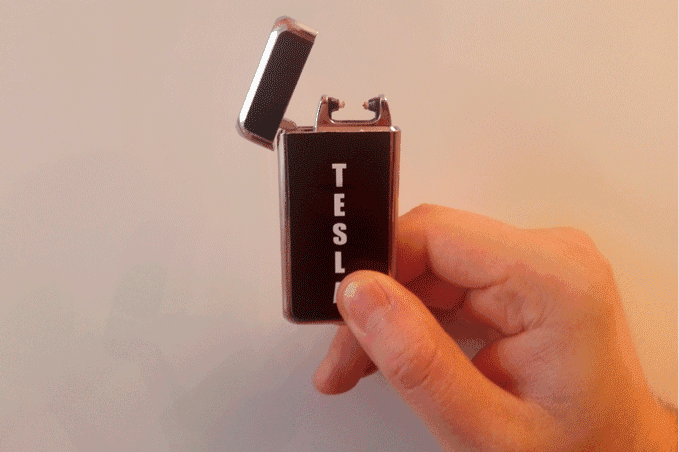
Lighters come in handy for everyone from smokers to concert-goers, but the ubiquitous disposable flick-on versions aren’t designed to last forever. At some point, they’re going to run out of fuel, and when they do, you’ll have no other choice but to buy another one. Sure, buying replacements isn’t a huge financial burden by any means, but wouldn’t it be nice if you never had to worry about fuel refills or replacement lighters ever again?
That’s where the Tesla lighter comes in. Designed by NY-based inventor Mark Pauling, Tesla is a self-charging electronic lighter that can ignite in any weather conditions, and recharge with just a shake. The lighter has been met with incredible crowdfunding support, which suggests that a new electric lighter option was definitely in demand.
Rather than using the spark/fuel method that most lighters employ, the Tesla lighter uses electromagnetic induction to power its electric arc. That means when you shake the lighter, the agitation of an internal magnet produces an electromotive force. That force is carried across a conductor, and in this case, is what powers the electric arc. It’s almost the exact same technology you’ll find in a shake-to-shine flashlight, but because the Tesla lighter’s creators used diametrical magnetization instead of axial magnetization, the energy output is stronger. A single shake should generate up to three seconds of a stable arc of electricity. And since there is no flame produced, the Tesla lighter is completely windproof.
Rubber inserts protect the lighter’s electromagnet within a hard casing made from an Aluminum-Magnesium alloy. Thanks to the insulation and protection provided by the rubber, Tesla can ignite in extreme temperatures ranging from -40 degrees Celsius to 50 degrees Celsius. The convincing demo shows the Tesla burning through paper just after digging the lighter out of a pile of snow. Rubber insulation should also protect Tesla from harmful elements like water and dust. That way, Tesla lighters will last longer than disposable lighters, and all without a single gas refill.
On Kickstarter, the Tesla lighter had an original funding goal of $5,000, which is modest in comparison to their wildfire success since launching. The campaign has already raised more than $100,000, unlocking every stretch goal of multicolored lighters in cool casings. A $25 pledge will get you your own Tesla lighter, and of course, bigger pledges earn backers more lighters. If all goes according to plan, Tesla lighters should ship in April 2016.


